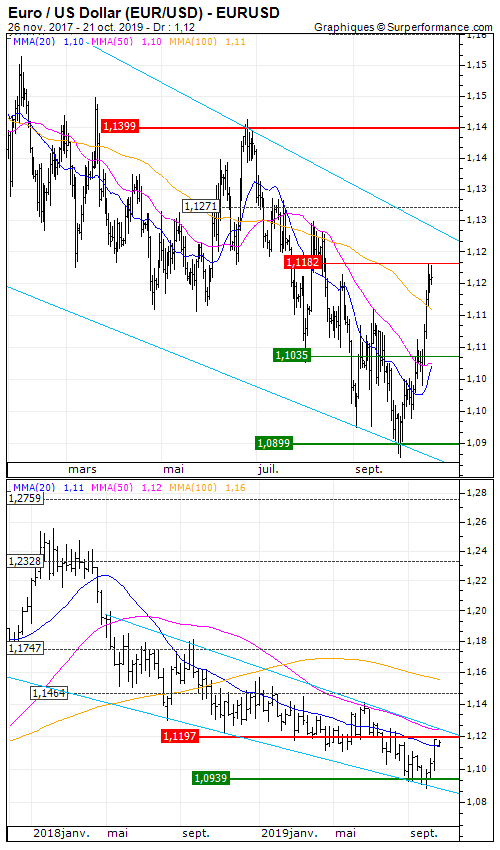Euro / US Dollar (EUR/USD) : New rebound and key level
By Mathieu Burbau
The latest reports of the FED and the ECB show fewer divergences than expected between the two major central banks. The divisions within the Frankfurt Governing Council, particularly in the area of quantitative easing (QE), are fuelling speculation around a somewhat less accommodating policy under Christine Lagarde’s upcoming leadership. On the other hand, the American Federal Reserve’s concerns about trade tensions have clearly increased, opening the door to a further rate cut this year And the numbers don't lie. The contraction of manufacturing activity, which has reached record levels in more than a decade, in both the United States and Germany, is a concrete illustration of the negative consequences of Donald Trump’s protectionist policy.“So even if a partial agreement, of a different nature from new sanctions against China, has been announced, too little major progress is being made at this stage to clarify the horizon.
Brexit, limited agreement or postponement appear to be the two most plausible scenarios, almost definitively ruling out that of a no deal, particularly feared by the markets.
Graphically, the Euro is based on its recent low points to offer a rebound of an amplitude equivalent to that of last June (300 pips). A new test to be transformed as weekly data shows that prices are now moving between moving averages at 20 and 50 weeks and are approaching a long-term resistance of USD 1,1197. This will have to be erased at the end before considering challenging the underlying trend that has been in place since early 2018.





